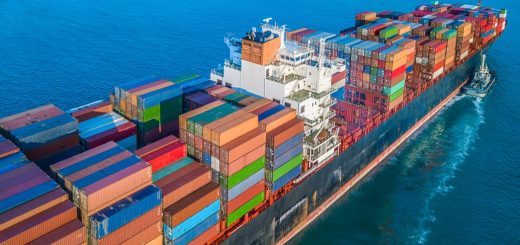Carbon-Neutral Consolidated Shipping: Eco-Friendly Ways to Ship Goods from China to Europe & North America
Introduction: The Rise of Sustainable Global Shopping
As e-commerce bridges continents, more European and North American consumers are purchasing goods from China—whether it’s affordable electronics, custom apparel, or niche products unavailable locally. However, shipping individual items across thousands of miles generates significant carbon footprints. Enter carbon-neutral consolidated shipping: a sustainable solution that combines multiple packages into a single shipment, reducing costs and environmental impact. This guide explores how to leverage eco-friendly logistics for seamless, affordable, and green returns from China to Europe and North America.
Why Consolidated Shipping Matters for Sustainability
Traditional international shipping often relies on air freight, which accounts for 3.5% of global CO₂ emissions. By contrast, consolidated shipping:
- Reduces Emissions: Grouping packages cuts down on frequent flights or partial sea freight loads.
- Lowers Costs: Splitting shipping fees among multiple customers minimizes per-item expenses.
- Supports Green Initiatives: Many providers now offset carbon emissions or use renewable energy.
For eco-conscious shoppers, consolidated shipping aligns personal savings with planetary health—a win-win.
Key Considerations for Carbon-Neutral Consolidated Shipping
1. Choose the Right Transport Mode
- Sea Freight: Most eco-friendly (lowest CO₂ per kg) but slower (4–8 weeks). Ideal for non-urgent items.
- Rail + Sea: Faster than pure sea routes (e.g., China–Europe rail corridors) with moderate carbon footprints.
- Air Freight: Highest emissions but fastest. Use only for time-sensitive shipments.
Tip: Prioritize providers using electric or hybrid trucks for domestic leg-end journeys.
2. Verify Carbon-Neutral Certification
Look for providers with:
- ISO 14064 certification (carbon management).
- GOODSPEED or Clean Cargo initiatives.
- Transparent carbon offset programs (e.g., reforestation projects).
3. Compare Consolidation Service Models
- Dedicated Accounts: Best for frequent shippers (e.g., MyUSA, Shipito).
- On-Demand Consolidation: Pay-as-you-go platforms like Parcl or Sendmybag.
- Hybrid Services: Some offer both storage and consolidation (e.g., DHL eCommerce).
4. Calculate Total Costs (Inc. Hidden Fees)
Beyond shipping rates, factor in:
- Import duties/taxes (varies by EU/NAFTA country).
- Packaging fees (opt for reusable materials).
- Insurance (mandatory for high-value goods).
Use tools like ShipBob’s calculator or PirateShip’s rate comparison to benchmark.
Step-by-Step Guide to Carbon-Neutral Consolidated Shipping
Phase 1: Preparing Your Packages
- Shop Smart: Choose sellers near major Chinese logistics hubs (e.g., Yiwu, Shenzhen) to reduce inland transportation.
- Consolidate Locally: If buying from multiple sellers, send all items to a Chinese warehouse (e.g., Shenzhen’s Yunfulian) before international shipping.
- Optimize Packaging: Use biodegradable peanuts or recycled boxes to cut waste.
Phase 2: Selecting a Carbon-Neutral Provider
- Top Picks for Europe:
- DHL GoGreen: 100% carbon-neutral sea routes with real-time tracking.
- EcoSend EU: Solar-powered warehouses and wind-energy shipments.
- Top Picks for North America:
- ShipZero: Partnerships with carbon offset startups like Pachama.
- UPS Carbon Neutral: Option to add offsets at checkout.
Phase 3: Tracking & Delivery
- Use platforms with AI-powered tracking (e.g., Parcel Monkey, AfterShip) to monitor progress.
- For EU deliveries, check if the provider handles VAT/duties pre-payment to avoid surprises.
Case Study: A Family’s Eco-Friendly Wardrobe Refresh
The Smiths (Ontario, Canada) ordered clothes from 10 Chinese sellers. Instead of individual shipments:
- They used Tencent’s WeChat Mini Program to forward items to a Guangzhou warehouse.
- Chose ShipZero’s sea+rail combo, offsetting emissions via rainforest conservation.
- Saved 70% on shipping vs. air freight and reduced their carbon footprint by 85%.
Result: A guilt-free wardrobe upgrade—without compromising sustainability.
FAQs: Addressing Common Concerns
Q1: Is carbon-neutral shipping more expensive?
A1: Often cheaper than standard air freight due to bulk rates. Offsetting costs average 1–1–5 per shipment.
Q2: How do I avoid customs delays?
A2: Use providers with pre-arrival compliance teams (e.g., Flexport’s EU VAT services).
Q3: Can I track eco-credentials?
A3: Yes! Platforms like EcoTransparency share emission reduction data per shipment.
Future Trends: Innovations in Green Logistics
- Hydrogen-Powered Ships: Startups like CMB.Tech are testing zero-emission vessels.
- Blockchain Tracking: IBM’s Food Trust model could soon verify carbon claims.
- AI-Optimized Routing: Companies like HaulHub use machine learning to minimize fuel use.
Conclusion: Ship Smart, Save More, Stay Green
Consolidated carbon-neutral shipping isn’t just a trend—it’s the future of ethical global trade. By choosing eco-friendly logistics, you support a circular economy while enjoying lower costs. Start by comparing providers, calculating your footprint, and joining the growing movement of sustainable shoppers.
Ready to ship? Explore [insert your platform’s link] for instant quotes and carbon-neutral options!

